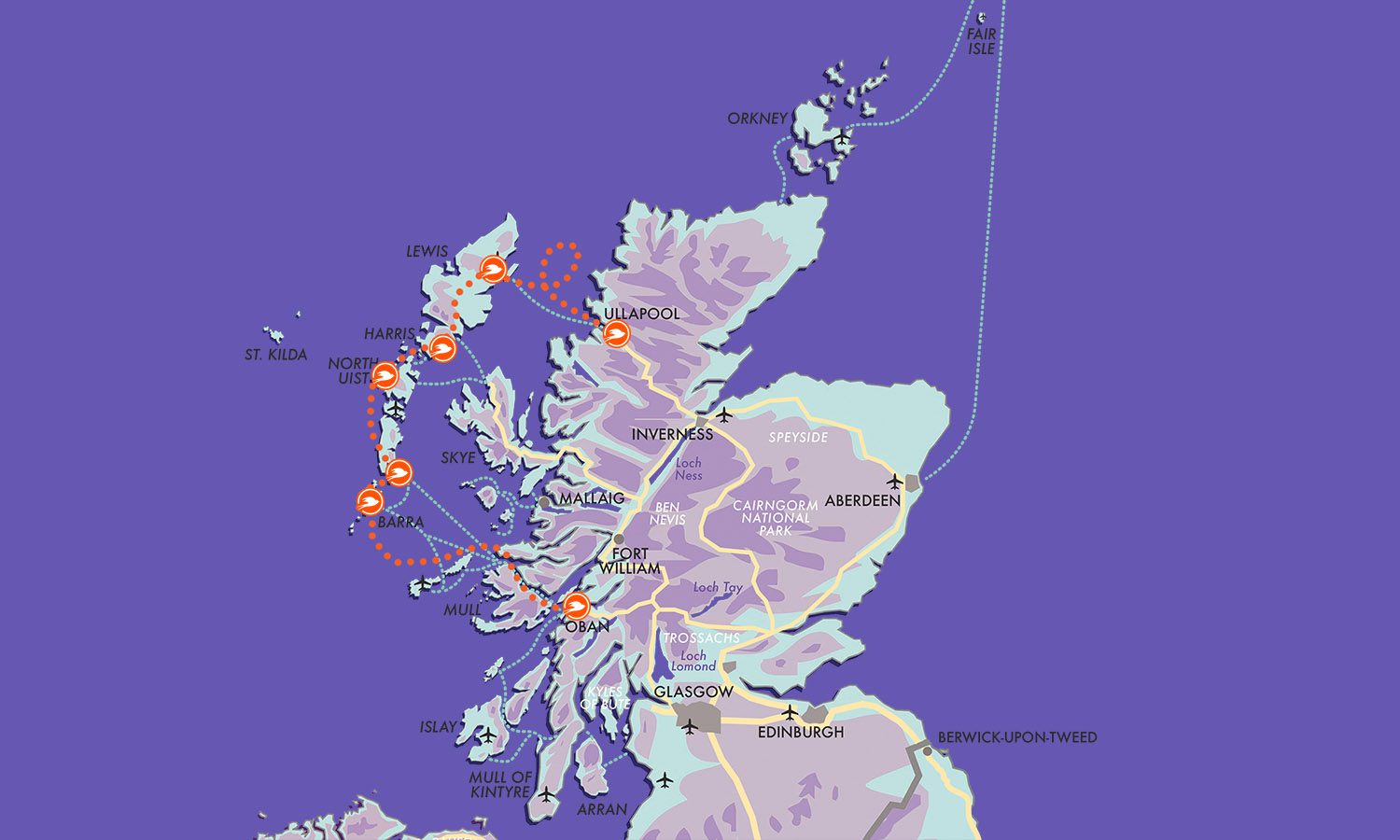Slowly Through the Outer Hebrides
The mysterious Calanais Standing Stones on the Isle of Lewis
Holiday inspiration currently loading...
Tour the Outer Hebrides, Scotland's enchanting outlying islands, at a wholly appropriate, supremely relaxed pace.
As modern life seems to gather daily momentum, so the Outer Hebrides appear to step back and contemplate where others rush in. Barra, Vatersay, Eriskay, the Uists, Benbecula, Berneray, Harris, Scalpay and Lewis await exploration, delivering an authenticity and tranquillity few destinations come close to matching. We’ve chosen some of the most appealing, out-of-the-way accommodation available to ensure this self-drive tour of the Outer Hebrides is one of our most relaxing Scottish island holidays.
Examine our other “Slowly…” holidays to inspire those who enjoy traveling at a relaxed pace.

This multi-centre holiday covers Barra, Eriskay, North Uist, Harris and Lewis.
£1180 per person in April & October, £1285 per person from May to September.
This price is based on two people sharing an ensuite double or twin room for 12 nights on a bed & breakfast basis. This price also includes ferry travel as described for car and passengers.
A day trip to St. Kilda can be added on for an additional cost of £260 per person. As travel to St. Kilda is weather dependent, the exact day of departure may be subject to late change. If the trip does not run a refund of the excursion fare will be made. Please enquire for more details.
Before your departure, you will receive personalised holiday information including full directions, recommended routes, and suggestions on places to visit depending on your interests and our local knowledge to help you get the most from your holiday.
All itineraries and room types are presented subject to availability at specific hotels.
We work hard to make sure the unexpected doesn’t affect your trip. On rare occasions, changes or cancellations may occur, affecting accommodation, transport or excursions. We are committed to informing you of any such circumstances and will use our knowledge and resources to offer suitable alternatives wherever possible.
You are requesting availability for
This holiday can be arranged from April to October.
Availability is individually checked for a hand-picked selection of smaller hotels, guest houses and other independent businesses, so please bear with us and we will respond in 1-2 working days.
Please note: All fields marked * are required
All our holiday prices include a service charge of £9 per person per night towards the costs we incur in researching, planning and designing your holiday.
We guarantee to refund this service charge if you believe that arranging your holiday through McKinlay Kidd has not met your expectations for value. All we ask is that you write to us within 7 days of your return and explain your reason for claiming the refund. This will ensure that we can improve the experience for all our future guests.
Highlights were the scenery, the people, the relaxed atmosphere.Margaret & Charles, Midlothian, UK